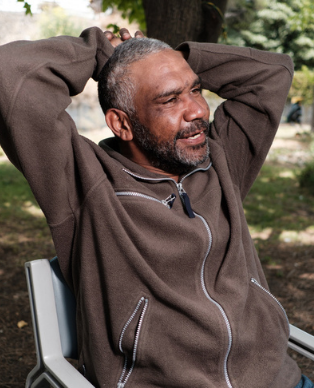Victoria’s Big Housing Build is the largest-ever investment in social and affordable housing.
Community housing organisations will receive $1.38 billion to develop 4,200 of the new social housing homes. This funding will be granted through the Social Housing Growth Fund, and is expected to provide capital grants to registered community housing organisations for proposals that meet the aims of the Big Housing Build.
Jointly administered by the Treasurer and Minister for Housing, the Social Housing Growth Fund is a dedicated fund established to support innovative partnerships between the Victorian Government and consortia including the community housing, private, not for profit and local government sectors. Applications for this funding must be led by a registered community housing organisation, but can include private sector, not for profit and local government partners.
Homes Victoria has also announced $2.14 billion of funding which will support partnerships with the private and community housing sectors. Unlike the Social Housing Growth Fund, this funding stream is likely to include Homes Victoria as an active partner. It may include building on Victorian government land sites as well other significant developments that require more sophisticated partnership models than the Social Housing Growth Fund.
Details on how this funding will be assessed and awarded are not yet available, but Homes Victoria expects that this funding stream will deliver up to 5,200 new homes.
The Big Housing Build will invest $1.25 billion in social housing across regional Victoria. Homes Victoria has already guaranteed minimum levels of investment in 18 local government areas, totalling $765 million.
CHIA Vic’s members already house low-income renters in almost every local government area in Victoria, and are well-placed to work with regional and rural councils to identify local housing need and collaborate on developments that respond to the local community.
Community housing organisations already house people living with mental illness, but the Big Housing Build has committed to expanding this by a further 2,000 units. Based on recommendations from the Royal Commission into Victoria’s Mental Health System these units will be co-designed with people who have lived experience of mental illness, support providers, and community housing organisations. Details on the co-design process have not yet been finalised but CHIA Vic and our members will be working closely with government to develop projects that incorporate the qualities important to people living with mental illness.
Pairing housing with support is critical to ensuring that people living with mental illness have the resources they need to sustain their housing. Historically it has sometimes been challenging for these community housing tenants to access the supports they need when they need them. However, $46 million is committed in the 21/22 Budget for Victorians housed through the Big Housing Build to have the mental health and wellbeing support they need to recover. This includes funding to co‑design and plan for a further 500 housing places for young people living with mental illness.

The Community Housing Aboriginal Cultural Safety Framework is a practical tool designed to assist community housing organisations to reflect on their practices and adopt strategies and actions to improve the way they engage with and address the housing needs of Aboriginal Victorians.
See the frameworkAs a consequence of the compounding impact of intergenerational dispossession, loss and disadvantage Aboriginal people in Victoria are experiencing the highest rate and fastest growth of homelessness in the nation. Last year, 17% of Aboriginal Victorians sought assistance from a homelessness service and over half (55%) were already homeless. Further, one in every ten people who are applicants for social housing on the Victorian Housing Register are Aboriginal Victorians.
In recognition of this, 10% of the Big Housing Build funds will go towards housing that meets the needs of Aboriginal Victorians, with a big role to be played by the community housing sector in delivering the projects.
Grounded in the principles of self-determination (ensuring that Indigenous communities are able to meet their own social, cultural and economic needs), community housing organisations are exploring if and how they can partner with Aboriginal landowners and community-controlled organisations (ACCOs) to design and build housing to meet the local Aboriginal community needs. Cultural safety will be key to these partnerships.
Aboriginal Housing Victoria will play a key role in developing processes and networking opportunities between the mainstream community housing organisations and Aboriginal communities.
See the framework that helps First Nations people benefit from the Build
The frameworkTo get the most from the Build, CHOs, local government and private housing developers need to work together.
Learn more